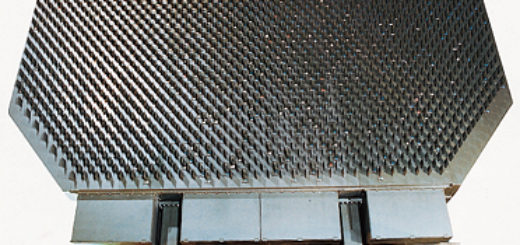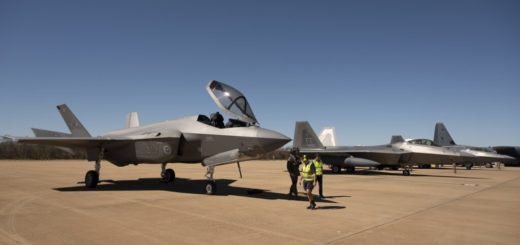Gray Eagle STOL Drone Completes First Successful Flight from South Korean Amphibious Ship ROKS Dokdo

{loadposition bannertop}
{loadposition sidebarpub}
On November 12, 2024, the South Korean Navy reached a significant milestone with the first flight of a Gray Eagle STOL drone from a naval vessel, the ROKS Dokdo, to a land base. This mission, conducted in collaboration with General Atomics Aeronautical Systems, Inc. (GA-ASI) and Hanwha Aerospace, demonstrated the versatility of the Gray Eagle STOL, capable of taking off from an amphibious ship and landing on a land runway. The drone launched from the deck of the amphibious landing ship ROKS Dokdo (LPH-6111), located off Pohang, South Korea, and concluded its mission with a successful landing at Pohang Naval Air Base, validating its operational capabilities in a military context and expanding the strategic options of the South Korean Navy.
Follow Army Recognition on Google News at this link
This test was part of a broader experimental process aimed at evaluating future combat systems by integrating new technologies and configurations that align with current operational needs (Picture source: ROK Navy)
The Gray Eagle STOL, known as the “Mojave” in its prototype version, is an advanced tactical drone developed by General Atomics. Originally designed for the U.S. Army as an evolution of the Predator, this drone is powered by a Thielert 165-horsepower heavy-fuel engine compatible with both diesel and jet fuel, supporting battlefield fuel standardization. With an endurance of 25 hours and a maximum altitude of 8,839 meters, the Gray Eagle STOL has extensive autonomy. It can carry a payload of 488 kg, including EO/IR sensors for target designation, SAR radar for moving target detection, and communication relay systems. Equipped to perform a variety of missions, it can carry up to 16 Hellfire missiles and can be fitted with additional armaments, including Stinger air-to-air missiles, small diameter bombs (GBU), and anti-drone systems, enhancing its capability for both strike and close air support (CAS) in littoral and amphibious operations.
This test was part of a broader experimental process aimed at evaluating future combat systems by integrating new technologies and configurations that align with current operational needs. Traditionally, the South Korean Navy has deployed vertical take-off drones; this experiment marked its first use of a fixed-wing drone from a deck-based runway. This approach facilitates the assessment of drone capabilities within maritime environments, emphasizing readiness in critical security situations and advancing the deployment of unmanned aerial power as part of the Navy’s evolving complex marine combat system.
The strategic interest of the South Korean Navy in the Gray Eagle STOL addresses the need to mitigate reduced military personnel while diversifying operational capabilities. According to Admiral Yang Yong-mo, Chief of Naval Operations, this test aimed to validate the effectiveness of embarked combat drones, supporting the transition to integrated manned-unmanned operations. This move aligns with recent conflicts, such as those in Ukraine and the Middle East, where autonomous systems have proven essential in modern combat.
In this inaugural test, the Mojave successfully took off from the Dokdo, executed simulated landing procedures near the vessel, and then landed on a land-based runway, highlighting its adaptability (Picture source: ROK Navy)
Deploying the Gray Eagle STOL from naval vessels presents specific challenges for maritime infrastructure. Although the ROKS Dokdo and its sister ship, the Marado, were initially designed for helicopters, their 199-meter decks can accommodate fixed-wing drone operations with additional modifications. In this inaugural test, the Mojave successfully took off from the Dokdo, executed simulated landing procedures near the vessel, and then landed on a land-based runway, highlighting its adaptability. However, the deck’s limited width restricts safe drone landings at sea, suggesting further modifications may be necessary for optimal future missions.
This operation confirmed the short take-off and rapid deployment capabilities of the drone from the Dokdo, which has a 100-meter-long flight deck. The exercise established stable communication between the vessel and Pohang’s Naval Air Command, where the drone ultimately landed. Conducted in collaboration with industry partners, this test also aims to establish a strengthened maritime operational concept, incorporating autonomous systems for complex undersea and aerial missions. The South Korean Navy plans to expand the role of autonomous drones to reinforce its operational capabilities at sea as part of a comprehensive maritime combat system tailored to meet today’s security challenges.
The impact of this technological advancement extends beyond the South Korean Navy. The global rise of drone technology has prompted navies worldwide to reevaluate their vessel designs and operational capabilities. In response, countries such as the United States and the United Kingdom have repurposed existing ships as drone carriers or developed new vessels to support autonomous systems. This trend reflects a shift toward technology-focused naval warfare, where drones enable reconnaissance, anti-submarine, and strike missions in remote areas without dependence on land bases. For South Korea, the Navy intends to further develop maritime drone missions, including surface target detection and undersea threat identification, enhancing defense capabilities to address current geostrategic challenges.

{loadposition bannertop}
{loadposition sidebarpub}
On November 12, 2024, the South Korean Navy reached a significant milestone with the first flight of a Gray Eagle STOL drone from a naval vessel, the ROKS Dokdo, to a land base. This mission, conducted in collaboration with General Atomics Aeronautical Systems, Inc. (GA-ASI) and Hanwha Aerospace, demonstrated the versatility of the Gray Eagle STOL, capable of taking off from an amphibious ship and landing on a land runway. The drone launched from the deck of the amphibious landing ship ROKS Dokdo (LPH-6111), located off Pohang, South Korea, and concluded its mission with a successful landing at Pohang Naval Air Base, validating its operational capabilities in a military context and expanding the strategic options of the South Korean Navy.
This test was part of a broader experimental process aimed at evaluating future combat systems by integrating new technologies and configurations that align with current operational needs (Picture source: ROK Navy)
The Gray Eagle STOL, known as the “Mojave” in its prototype version, is an advanced tactical drone developed by General Atomics. Originally designed for the U.S. Army as an evolution of the Predator, this drone is powered by a Thielert 165-horsepower heavy-fuel engine compatible with both diesel and jet fuel, supporting battlefield fuel standardization. With an endurance of 25 hours and a maximum altitude of 8,839 meters, the Gray Eagle STOL has extensive autonomy.
It can carry a payload of 488 kg, including EO/IR sensors for target designation, SAR radar for moving target detection, and communication relay systems. Equipped to perform a variety of missions, it can carry up to 16 Hellfire missiles and can be fitted with additional armaments, including Stinger air-to-air missiles, small diameter bombs (GBU), and anti-drone systems, enhancing its capability for both strike and close air support (CAS) in littoral and amphibious operations.
This test was part of a broader experimental process aimed at evaluating future combat systems by integrating new technologies and configurations that align with current operational needs. Traditionally, the South Korean Navy has deployed vertical take-off drones; this experiment marked its first use of a fixed-wing drone from a deck-based runway. This approach facilitates the assessment of drone capabilities within maritime environments, emphasizing readiness in critical security situations and advancing the deployment of unmanned aerial power as part of the Navy’s evolving complex marine combat system.
The strategic interest of the South Korean Navy in the Gray Eagle STOL addresses the need to mitigate reduced military personnel while diversifying operational capabilities. According to Admiral Yang Yong-mo, Chief of Naval Operations, this test aimed to validate the effectiveness of embarked combat drones, supporting the transition to integrated manned-unmanned operations. This move aligns with recent conflicts, such as those in Ukraine and the Middle East, where autonomous systems have proven essential in modern combat.

In this inaugural test, the Mojave successfully took off from the Dokdo, executed simulated landing procedures near the vessel, and then landed on a land-based runway, highlighting its adaptability (Picture source: ROK Navy)
Deploying the Gray Eagle STOL from naval vessels presents specific challenges for maritime infrastructure. Although the ROKS Dokdo and its sister ship, the Marado, were initially designed for helicopters, their 199-meter decks can accommodate fixed-wing drone operations with additional modifications. In this inaugural test, the Mojave successfully took off from the Dokdo, executed simulated landing procedures near the vessel, and then landed on a land-based runway, highlighting its adaptability. However, the deck’s limited width restricts safe drone landings at sea, suggesting further modifications may be necessary for optimal future missions.
This operation confirmed the short take-off and rapid deployment capabilities of the drone from the Dokdo, which has a 100-meter-long flight deck. The exercise established stable communication between the vessel and Pohang’s Naval Air Command, where the drone ultimately landed. Conducted in collaboration with industry partners, this test also aims to establish a strengthened maritime operational concept, incorporating autonomous systems for complex undersea and aerial missions. The South Korean Navy plans to expand the role of autonomous drones to reinforce its operational capabilities at sea as part of a comprehensive maritime combat system tailored to meet today’s security challenges.
The impact of this technological advancement extends beyond the South Korean Navy. The global rise of drone technology has prompted navies worldwide to reevaluate their vessel designs and operational capabilities. In response, countries such as the United States and the United Kingdom have repurposed existing ships as drone carriers or developed new vessels to support autonomous systems. This trend reflects a shift toward technology-focused naval warfare, where drones enable reconnaissance, anti-submarine, and strike missions in remote areas without dependence on land bases. For South Korea, the Navy intends to further develop maritime drone missions, including surface target detection and undersea threat identification, enhancing defense capabilities to address current geostrategic challenges.






